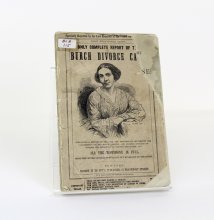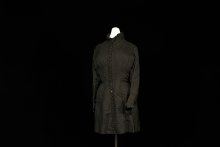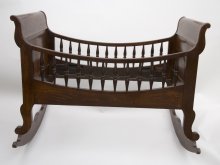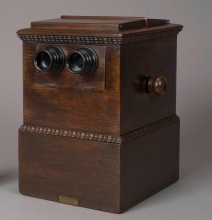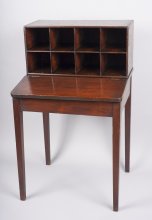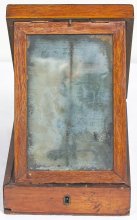Civil War Era (1848-1877)
The period that opened with the adoption of a new state constitution saw continued growth in agricultural and industrial production. The state’s population grew rapidly with settlers from other states but especially due to immigration from German states and Ireland. Growing debate over the role of slavery in the life of the nation raised tensions to a level that finally sundered the Union. Illinois’ own citizens, many of whom had settled here from the Upland South, were divided over the issue. As the home of Stephen A. Douglas, a national leader of the Democrats, and his skilled, Republican challenger in the form of Abraham Lincoln, Illinois was a crucial battleground during the decade that ended in war. The advent of photography would revolutionize the way we captured the harsh realities of war and forever changed the way we look at ourselves and the world. The state contributed mightily to the Union cause, providing its commander-in-chief numerous military leaders, more than 220,000 soldiers and sailors, and large volumes of agricultural and manufactured products.
An Illinois divorce case made national headlines in early 1860. Isaac Howe Burch, a prominent Chicago banker and real estate investor, sued his wife Mary Weld Turner Burch on the grounds of adultery.
This bodice was worn by Mary Lincoln approximately a decade after the death of her husband. Abraham Lincoln’s assassination had plunged Mary into a deep grief from which she never truly recovered, particularly after the additional blow of losing her youngest son, Tad, in 1871. The woman who once delighted in fine, fashionable gowns wore only somber black mourning ensembles for the rest of her life.
The Lincolns were fortunate to have a long back porch on their house when they purchased it in 1844. Despite adding on and changing the house elsewhere, they kept the south-facing porch as long as they lived in the house, only adding some latticework in one section for shade and a place for the climbing roses to grow, making it a pleasant place to pass the time.
Highs and lows were captured in this one artifact from the Lincolns’ lives in Illinois. The Lincolns’ oldest son, Robert, was born while they were living in one room at the Globe Tavern, and this cradle would have been much too large and expensive for the Lincolns. After the family moved into their one and a half story home, and Mary had their second son, Eddie, in 1846, they had the room and a little extra money to purchase this large walnut cradle.
Mary Lincoln did not know how to cook when she first married Abraham Lincoln, having grown up in homes with slaves in Kentucky. She quickly learned over the large, open fireplace in her new home, but the addition of a wall dividing the kitchen from the dining room destroyed the fireplace and gave Mary a chance to acquire a cook stove.
Mr. Lincoln is often only thought of as the President, but in Illinois, he was also a husband and father who was known to spoil his little boys. Mr. Lincoln also had an interest in technology. These traits came together in Mr. Lincoln’s purchase of a stereoscope for his sons. The stereoscope allowed for viewing on two sides and cost approximately $18-20, the equivalent of a laborer’s monthly wages.
Abraham Lincoln used this desk when he first “began to do business for myself” around 1844, according to the affidavit. About ten years later, he brought it home to his new second floor bedroom and used it there for a few years until he upset the inkwell on it and upset Mrs. Lincoln in the process. She threw it out!
This is Abraham Lincoln’s portable shaving mirror. He used it riding the 8th Illinois Judicial Circuit prior to his presidency. Made from stained oak, it could be folded and neatly tucked away in its self-contained wooden, rectangular case.
This is one of only five surviving copies of the Gettysburg Address in Abraham Lincoln’s own hand. He originally gave it to Edward Everett soon after the Gettysburg National Cemetery dedication. Everett was the main speaker that day, giving a two-hour address.
On May 13, 1873, farmer Henry M. Rose of Waterman was awarded a patent for a fence designed to keep livestock at bay. It consisted of sharp spikes protruding from a thin wooden rail. Rose displayed this patent model for his fence at the DeKalb County Fair that fall, where it caught the eye of three men. Rose’s patent inspired Joseph Glidden, Isaac Ellwood, and Jacob Haish to each try their hand at inventing barbed wire fencing.
Pages






